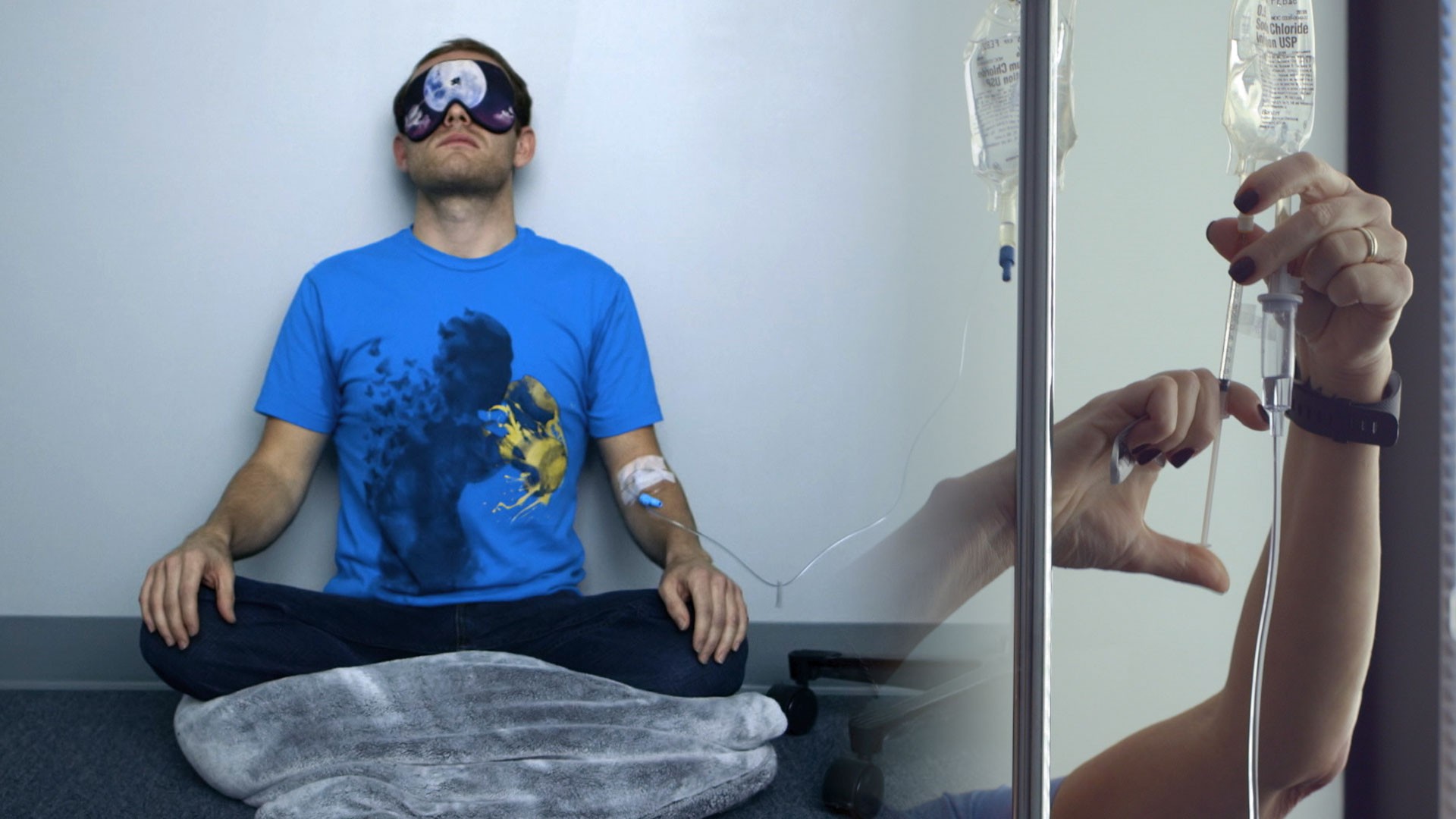One day, a teenage patient walked into Lisa Pan's office carrying a backpack full of rocks. He told her that after their appointment he planned to jump off a bridge and let the load carry him to the bottom of one of Pittsburgh's rivers."By that time, we had already tried 17 medications and he wasn't any better," recalls Pan, a psychiatrist at the Western Psychiatric Institute and Clinic. He had started cutting himself at age 11 and was previously hospitalized after swallowing a handful of pills from his grandmother's medicine cabinet in a suicide attempt.
Advertisement
"I knew I couldn't let him leave," Pan says. She hospitalized him again, as an immediate solution. As for what to do in the longer term, that's always a difficult process in Pan's particular department at Western Psych, the STAR (Services for Teens at Risk) Center.STAR serves severely depressed children and teenagers from across the region. Parents often consult the clinic for assessment, referrals, and treatment after taking their child to a therapist, trying multiple medications, or following a hospitalization. It's not uncommon for some families to have locked up all the medications, knives, ropes and extension cords at home, rearranging their lives to monitor their child's self-harming behavior. Schools also refer students after frequent absences, or when behavioral problems prevent them from moving up a grade.Some STAR patients are still suicidal after a dozen treatments, but STAR doctors press on when a staggering menu of options have already been tried. This mindset led Pan, a Dartmouth-trained psychiatrist who has been affiliated with Western Psych since she arrived for her residency in 2000, to try a new approach, one that colleagues are now calling a breakthrough.Pan began to check the neurotransmitter levels in the cerebrospinal fluid of her patients. "There had been research from back in the 1980s showing low serotonin metabolites was linked to depression," she says. Pan recalls reading about it in medical school. She approached David Finegold, a professor of human genetics in the University of Pittsburgh's Graduate School of Public Health, about doing a lumbar puncture (also known as a spinal tap) of the boy with the bag of rocks. The lab work is common for children who show signs of a neurological disorder, but not for psychiatric patients.
Advertisement
Pan received permission for the boy to go to Children's Hospital of Pittsburgh, within the same hospital network as Western Psych, for the lumbar puncture. She found he was severely deficient in biopterin, a chemical that synthesizes many neurotransmitters.She also began to find that many of her patients had metabolic deficiencies, meaning they lacked some the basic proteins and small molecules needed to process mood-stabilizing neurotransmitters, like serotonin and dopamine. This deficiency can be treated with folinic acid (a type of B vitamin) and other vitamins used as replacements for the missing proteins and small molecules, a treatment that has almost no side effects.After years of treating patients with this approach and publishing case studies, Pan published, with several coauthors, a study of its effectiveness in the American Journal of Psychiatry last year. It used as a sample 33 teenage patients with treatment-resistant depression (the kind that remains after at least three treatment adjustments). Twenty-one had some kind of metabolic deficiency. No one in the control group had any kind. The most common deficiency was cerebral folate and every patient with that kind showed improvement after treatment with folinic acid."If the folate isn't there, you can't make healthy white matter," Pan says, referring to a part of the brain that coordinates among its regions and acts as a highway of signals. "It's very frustrating for patients to be told they're doing something wrong when the communication within the brain just isn't happening."
Advertisement
One such frustrated patient was Ben Finder of Pittsburgh, a former STAR patient. Though he had a normal childhood, Ben fell into a severe depression at age 13. "Across the board, I was less interested in things, less interested in school," says Finder, now 17. "More in freshman year, I had a lot of anxiety and spent a bunch of time out of school. It got tough to get out of bed." His mother, Jana Finder, a healthcare attorney, says all Ben ever wanted to was play on the computer. "When he wasn't interested in that, we knew we were in trouble."Ben told his parents he was thinking of suicide. Over two years, he was hospitalized four times. Ben's father, Jonathan, is a pediatrician at Children's Hospital of Pittsburgh (the same hospital where Pan took patients for spinal taps) and says being a doctor did not prepare him for the surreal realm of in-patient psychiatric treatment. "It's this bizarre world where parents are scrutinized," he says, "where we were restricted in how much time we could spend with him and how much contact we were told was good for him."Throughout Ben's depression, the Finders also tried more than 20 medications and paid $16,000 out-of-pocket for transcranial magnetic stimulation. Jana Finder made preparations for the times Ben was at home. "I went to Home Depot and bought a lockbox," she says. "I put all the knives, anything sharp, even a corkscrew wine opener in it."
Advertisement
More From Tonic:

After all these efforts, Ben attempted to hang himself with an electrical cord in 2014, leading to his longest hospitalization, seven weeks at Western Psych. "He didn't even care if he left the hospital," Jana says. "That was a new low." Jonathan Finder happened upon STAR's metabolic disorder treatment by chance. He bikes with a group of doctors from his hospital network, the University of Pittsburgh Medical Center. Hearing Ben's plight, one of his colleagues mentioned the unique approach.Though Ben was not a patient of Pan (and is not one of the subjects in the study), a geneticist screened him for metabolic disorders. Ben's case was another one of low cerebral folate. He began taking folinic acid. "We went to see him for Thanksgiving and he was laughing and feeling better," Jana says. "I asked him if he finally wanted to leave and he smiled and nodded."Ben became active and engaged again, even helping to lead group therapy, according to the Finders. "Being in medicine, you don't get to watch miracles very often, and seeing Ben go from suicidal to normal is as close to a miracle as I have seen," Jonathan says. "And to think it was just his levels of different neurochemicals. You can measure for neurotransmitters. You can measure for metabolites."The Finders have gone public with their story to encourage other clinics and physicians to test for metabolic deficiencies. Pan says it can be difficult to convince insurance companies of the value of the treatment. The total cost of a spinal tap ranges between $3,000 and $5,000. Some of the protein and small-molecule replacements are not cheap either. Ceprotin, a mixture she has used, costs $7,000 to $10,000 a month.
Advertisement
Gustavo Turecki, chair of the Department of Psychiatry at McGill University (and unaffiliated with Pan's research), says he wants to replicate this research. "It is groundbreaking to know so many suicidal teenagers have these deficiencies," he says.Pan says she would next like to check for the genetic markers and underlying biology of these deficiencies, which might reveal wider implications for her findings. She cautions that the current research is limited to teens, and is not an indicator of a strong correlation in metabolic deficiencies and suicidal depression in adults. "There is still so much to discover about the brain," she says. "We don't know everything about the kidney, but we know a lot about the kidney. The brain is still in many ways undiscovered."In the meantime, she stays in contact with former patients, keeping track of their graduations and degrees and careers. She says the starkest turnaround she's seen was a girl who was hospitalized on and off for seven years. A few months after treatment for a metabolic deficiency and release, she went to Disney World.And as for the boy with the backpack full of rocks, after treatment for metabolic deficiencies, he improved. Pan keeps in contact with him. He went on to lead a relatively normal life, eventually attending college. "He has a degree in biology now," Pan says, "and works in botany."Read This Next:Depressed People See the World More Realistically
Correction 8/17/2017: A previous version of this story stated that the Finders spent $16,000 out-of-pocket on electroconvulsive therapy. They actually spent it on transcranial magnetic stimulation. The article also stated that Ben Finder's psychiatrist screened him for metabolic disorders. It was actually a geneticist who performed the screening. Tonic regrets the errors.
Correction 8/17/2017: A previous version of this story stated that the Finders spent $16,000 out-of-pocket on electroconvulsive therapy. They actually spent it on transcranial magnetic stimulation. The article also stated that Ben Finder's psychiatrist screened him for metabolic disorders. It was actually a geneticist who performed the screening. Tonic regrets the errors.
